Back from the brink: Pollocksville fights back after Hurricane Florence disaster
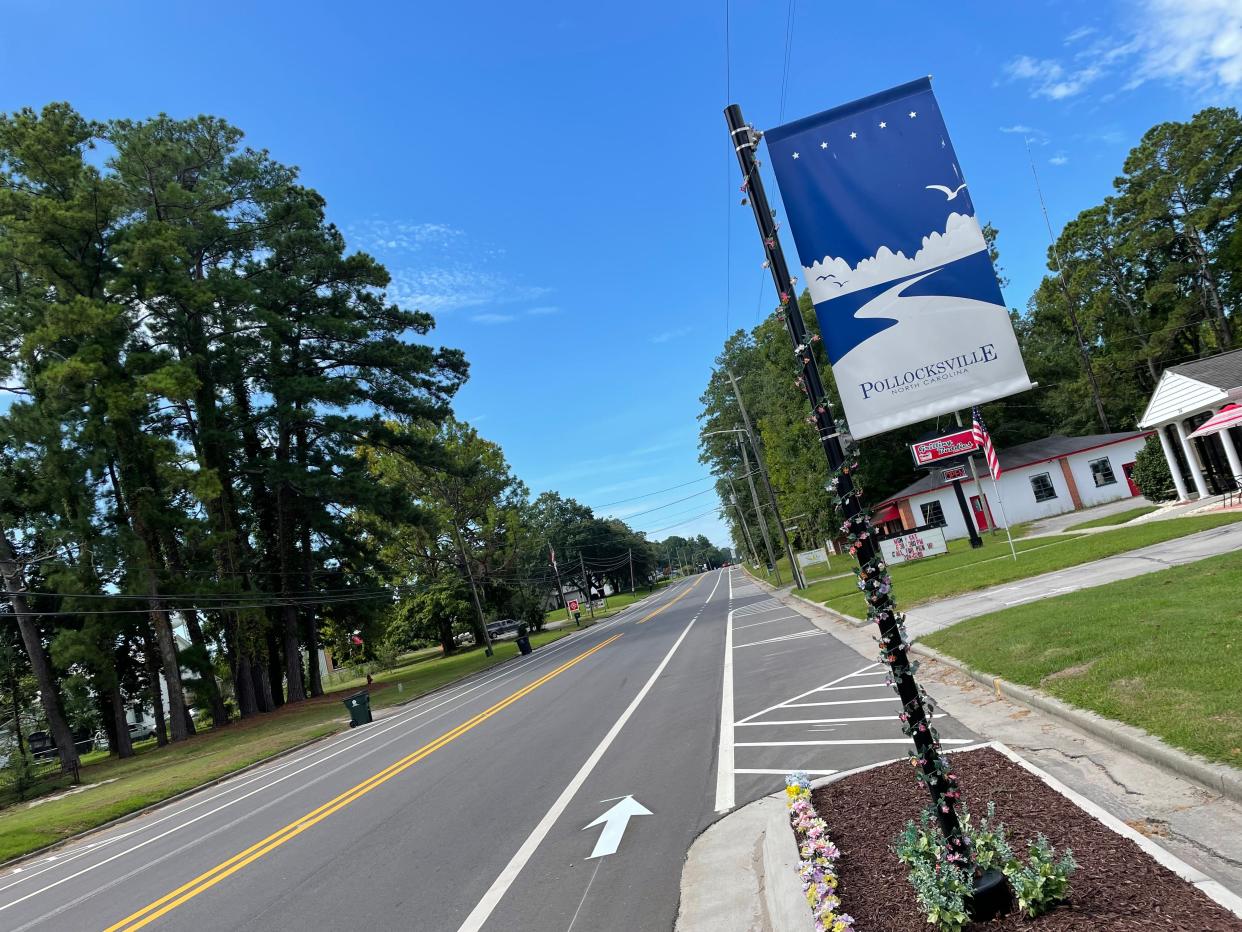
In September 2018, Pollocksville was under water.
As Hurricane Florence swept through eastern North Carolina, it sent the Trent River surging over its banks, covering the town’s Main Street beneath approximately 20 feet of water.
The flood caused significant damage to Pollocksville’s sewer system, left residents homeless, and closed many of the town’s businesses, notably the Trent Motel and the Trent Restaurant, two longtime Pollocksville landmarks.
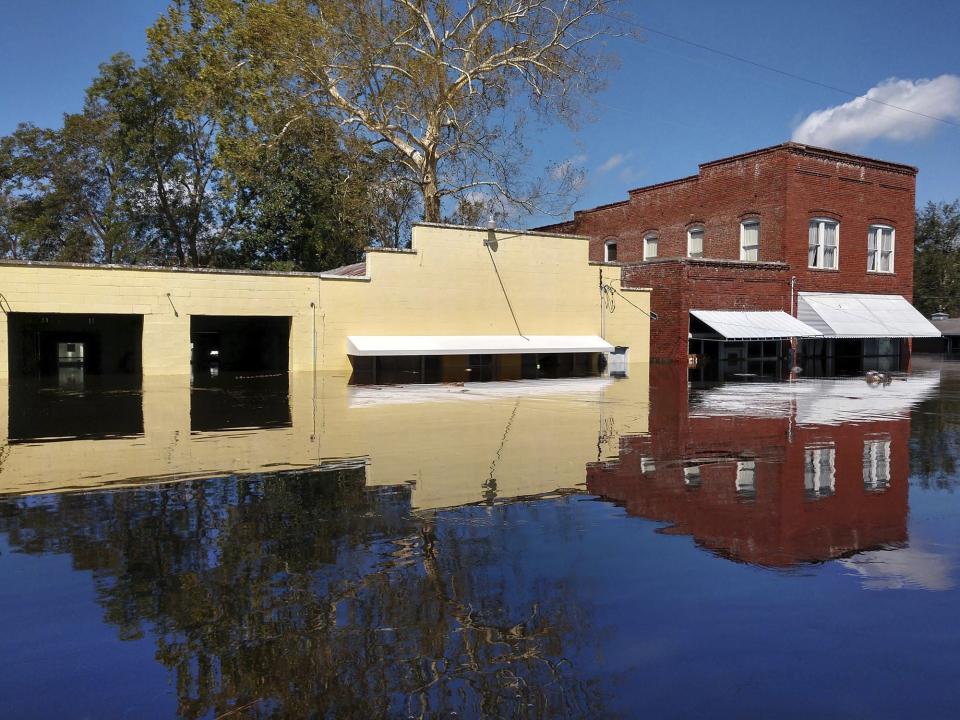
Nearly four years later, the town is almost unrecognizable from the days and months after the hurricane. Many of the deserted businesses have reopened their doors, damaged buildings have been torn down to make way for new construction, and the town’s Main Street has received an extensive visual upgrade.
According to Mayor Jay Bender, Pollocksville’s renewal is the result of hard work by the town’s staff and some crucial help from outside partners. Those efforts have brought in almost $1 million in grants for repairs and renovations, with another $1.3 million in the works.
Bender spoke to the Sun Journal last week from his office in the newly-renovated Pollocksville Town Hall. Housed in a restored train depot that was flooded during the storm, it was relocated to higher ground along Main Street in March 2021 and was reopened last January.
N.C. Governor Roy Cooper was on hand for the building’s rededication on June 15. Bender said the town used the opportunity to highlight how far it has come since it was nearly wiped out by Hurricane Florence.
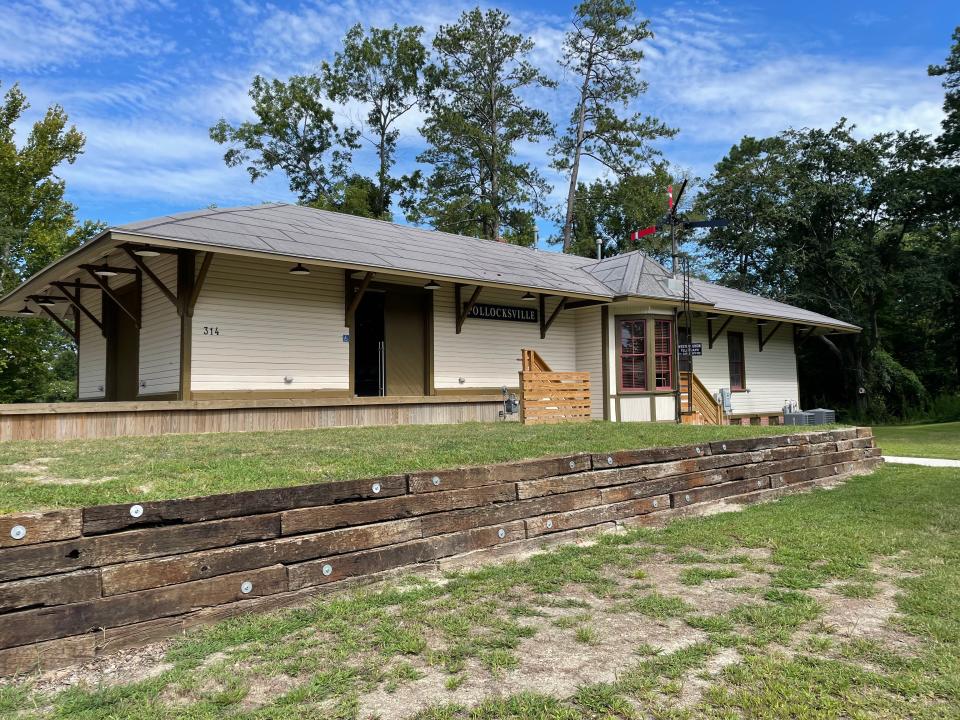
Among the most significant projects of the last four years is the completion of work at the Pollocksville Waterfront Park, including the installation of a new kayak launch and other amenities by N.C. Wildlife, which operates the park.
“We were very fortunate that prior to the storm Wildlife had already committed to a complete revamp of the boat ramp,” Bender said. “They did all new parking, a new ramp, new docks and provided some great landscaping to go with it.”
Pollocksville’s Main Street has also received a major upgrade from the N.C. Department of Transportation. The center lane has been reduced to make way for new bike lanes and designated parking. The most immediately noticeable change for travelers is the addition of banner poles and curbside flower boxes that will be planted this fall.
"I think it's made a big difference. It's something we're very happy with," Bender said.
Floodprint plan has helped bring in crucial grant dollars
Perhaps the most significant project for the town’s future has been the completion of the Pollocksville Floodprint Plan through the assistance of N.C. State University’s Coastal Dynamics Design Lab. The study details work that would help the town withstand another flood event like Hurricane Florence, such as the elevation of buildings and the establishment of a wetlands area along the waterfront.
The Floodprint plan brought CDDL architects, scientists, engineers, graphic designers, and environmental planners to the table with Pollocksville officials to reimagine future plans for Main Street and other areas of the town.
Bender said the plan played a significant role in Pollocksville being approved for several grants to assist in its storm recovery efforts. The town recently received a $548,000 Transportation Infrastructure Resiliency Fund grant that will be used for boat ramp projects, the building of crosswalks and sidewalks, additional plantings, and electrifying the banner poles so they can be lit at night.
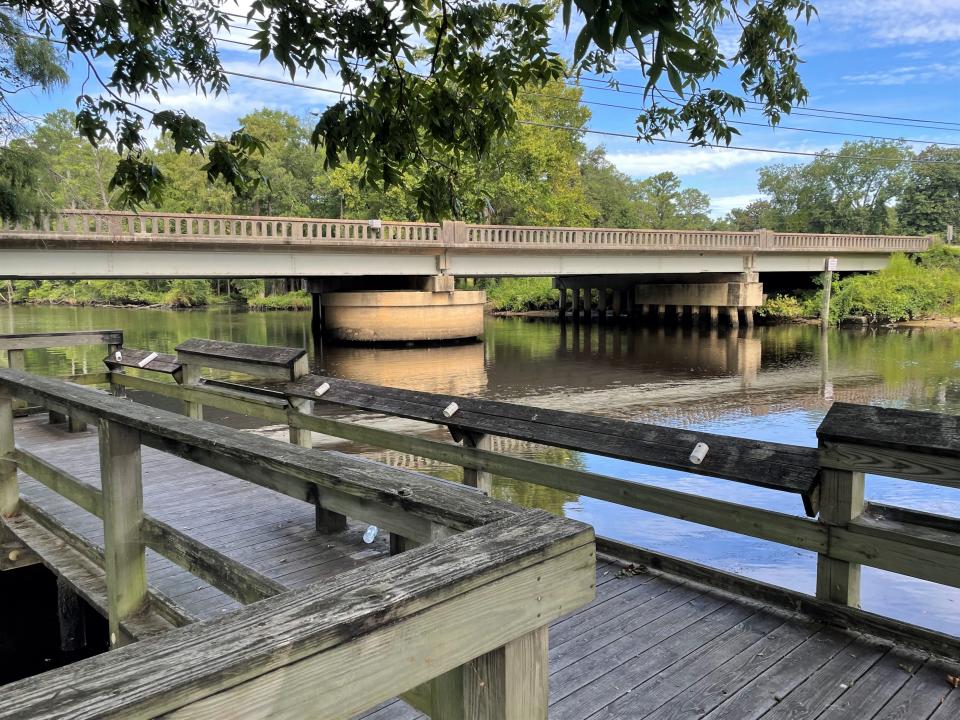
A $114,000 Environmental Enhancement Grant will go towards the construction of a waterfront boardwalk and the wetlands project.
Additionally, Bender said Pollocksville has applied for a $1 million Building Resilient Infrastructure and Communities grant through the Federal Emergency Management Agency.
“This will either be for raising houses and buildings that can be raised or going into some of these commercial buildings we have that have high ceilings and building up the floor,” Bender explained. “So everything is designed to provide some assurance to a potential commercial developer that we are doing everything we can to mitigate any flood situation.”
Bender said the town has also gotten nearly $3.5 million from the N.C. Division of Water Infrastructure which will be used for an asset inventory of Pollocksville’s water and sewer system and major revamping of the town’s well.
Bender stressed that Pollocksville has had significant help from area partner organizations such as the Harold H. Bate Foundation, the Jones-Onslow Electric Membership Corporation and Jones County Economic Development.
“It’s really important to have that outside support,” Bender said. “We’ve been aggressive and we’ve been persistent and we’ve had great partners. The work we’ve done with NC State has been significant.”
Bypass poses new challenges
Even before Hurricane Florence hit, Bender knew Pollocksville was facing a challenging future with the completion of the U.S. 17 bypass.
”We were talking about this before the flood. We knew the U.S. 70 realignment was going to change what Pollocksville looked like,” said Bender. “We knew we had to have a plan and after the flood that became even more important. That plan is what’s gotten us the grants so far.”
Bender said he is hopeful the bypass will bring new economic opportunities to Pollocksville. He said the town has been in talks with NCDOT about acquiring a 2.5-acre property near the bypass for future commercial development.
“We’re hoping at some time to see some businesses around the bypass,” he said. “I’ve long advocated that it has the potential to be the commercial center of Jones County. But property owners are going to have to agree to sell to someone to do that.”
Business reopenings, new housing are bright spots in town
One noticeable improvement to Pollocksville’s Main Street is the absence of the Trent Motel, which has been demolished to make way for several new houses being built on the property, "with more on the way,” said Bender.
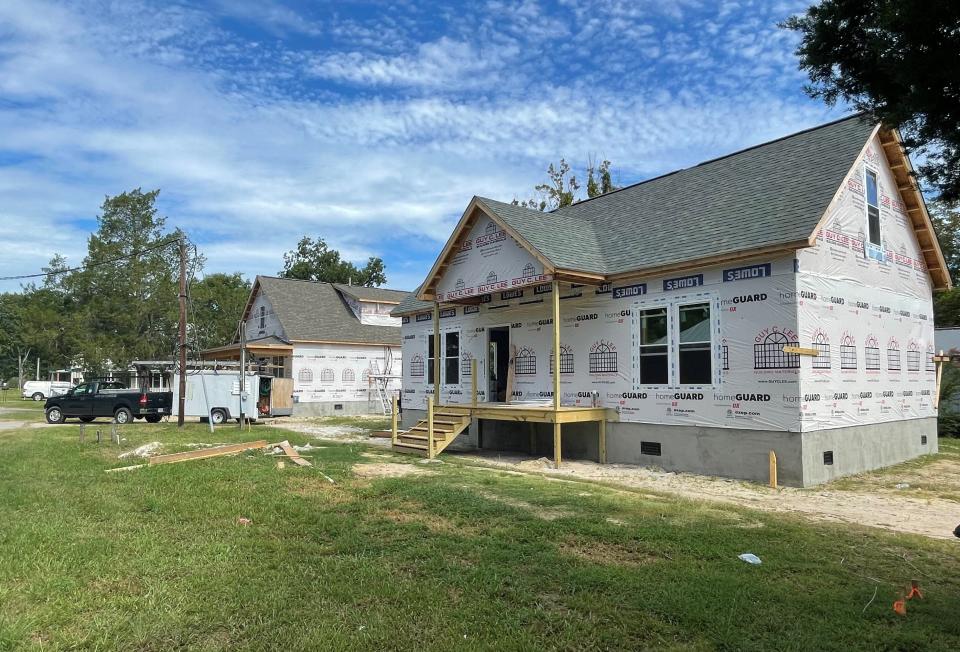
With the exception of one house, all dwellings on the west side of Main Street have either been reoccupied by their original owners or are under new ownership, he said.
Meanwhile, most of the town's businesses, such as Grilling Buddies, have reopened.
“There’s a lot going on. I understand that the old Trent Restaurant building is in the process of being purchased but it will probably not return as a restaurant,” Bender said.
The mayor admitted, however, that the town still has work to do in its recovery efforts, particularly along Barrus Street, which sits just yards from the Trent River and received some of the worst flooding damage.
“We’re working with FEMA and Rebuild NC and the property owners to hopefully deal with that,” Bender commented.
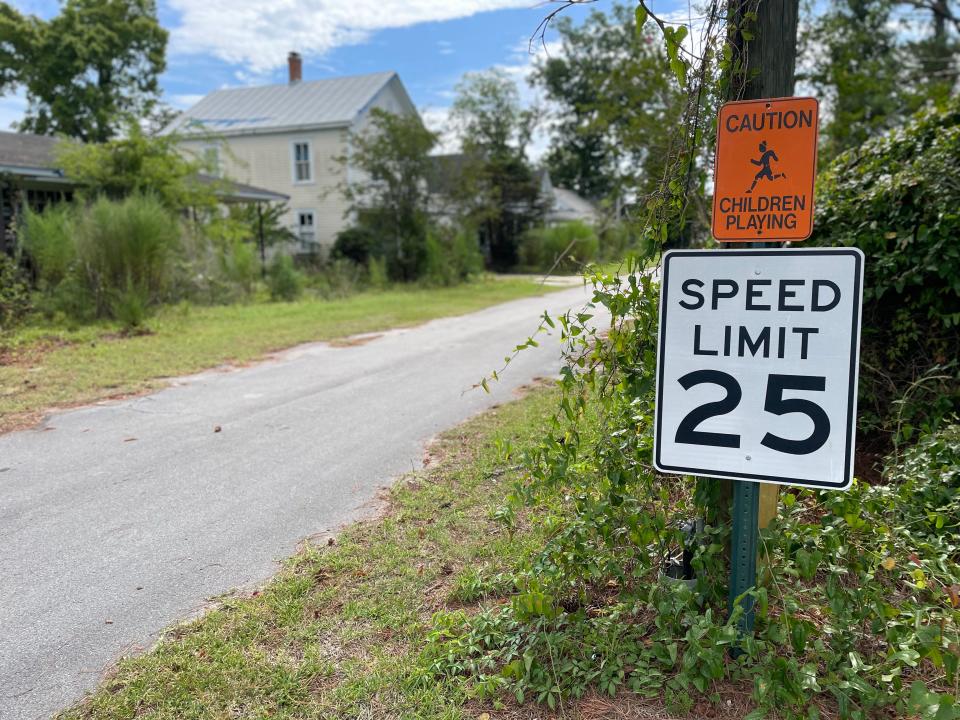
Pollocksville walks a tightrope when it comes to its relationship with the Trent River, Bender admitted. While the waterway brings in tourists it also poses significant risks to the town.
“The Trent River is our greatest asset and it’s also our greatest liability,” he commented. “To attract a business here the owner has to feel pretty confident that we’ve done everything we can to mitigate any damage when the next flood comes. Unfortunately, the reality is that there probably will be another flood, we just have to minimize the damage.”
Looking back, Bender said he was satisfied with how far his town has come since the devastation of Hurricane Florence.
“I feel that coming up on four years we’ve made tremendous progress,” he said. “The move of this town hall building; the restoration of the waterfront; the fact that the overwhelming majority of our flooded homes have been reoccupied by the original owners. So I feel really good about that. I probably didn’t feel as good four years ago.”
This article originally appeared on Sun Journal: Back from the brink: Pollocksville reemerges after Hurricane Florence

